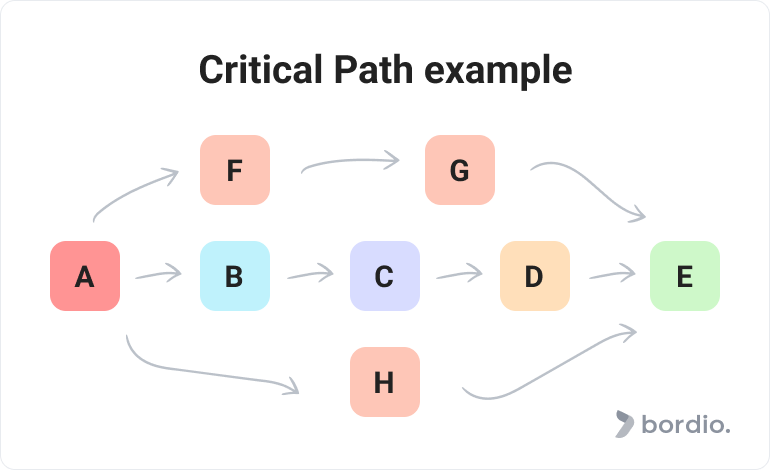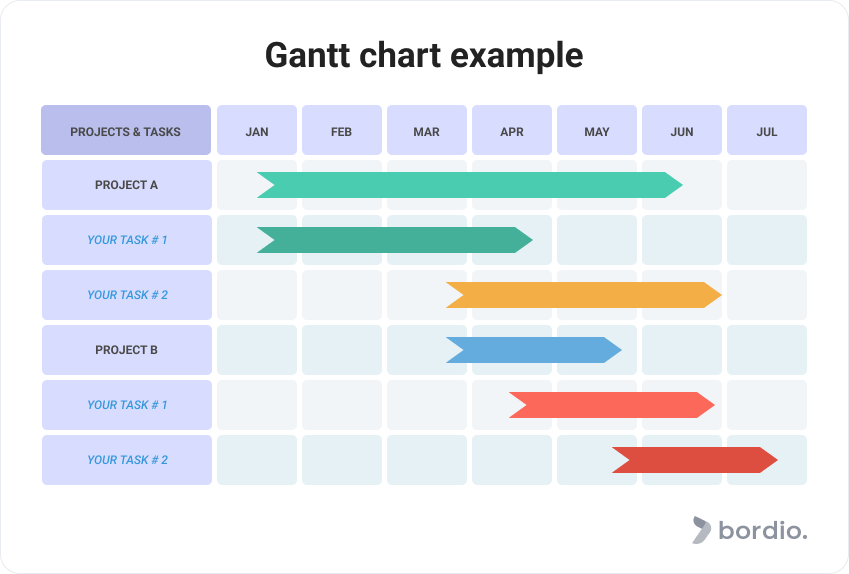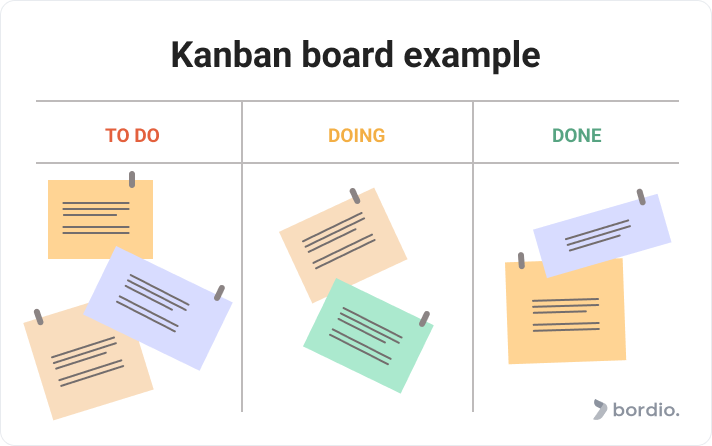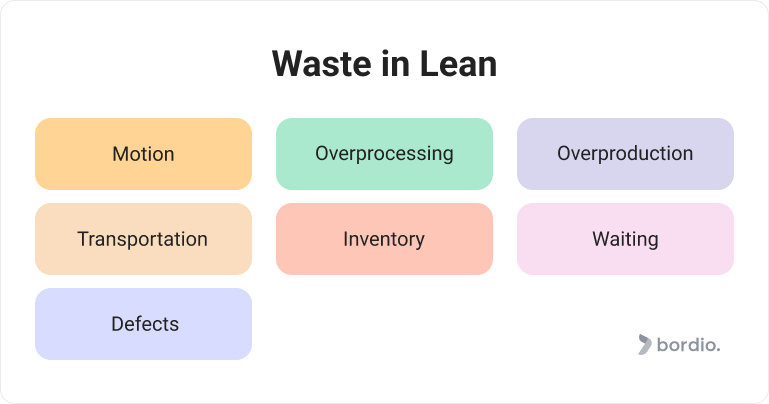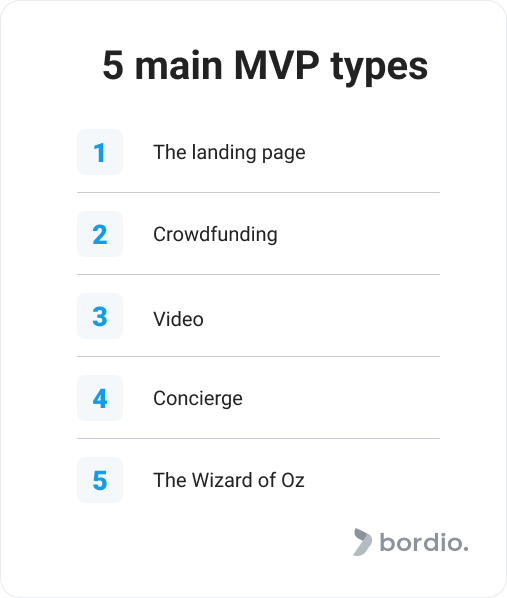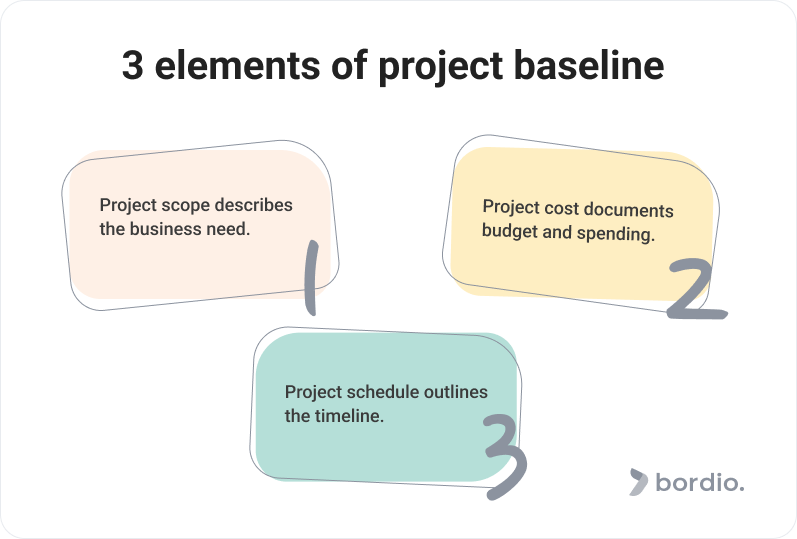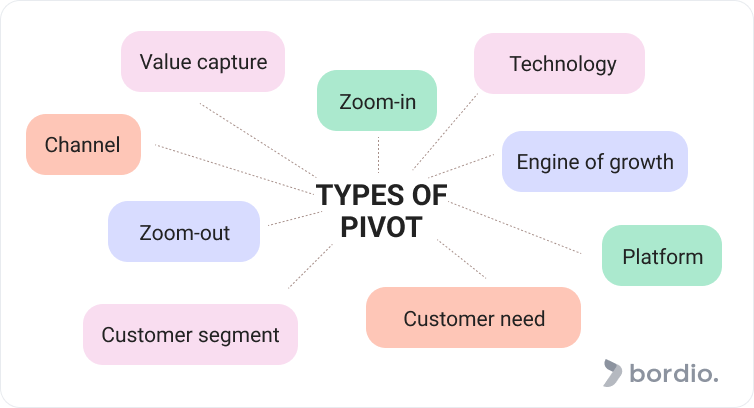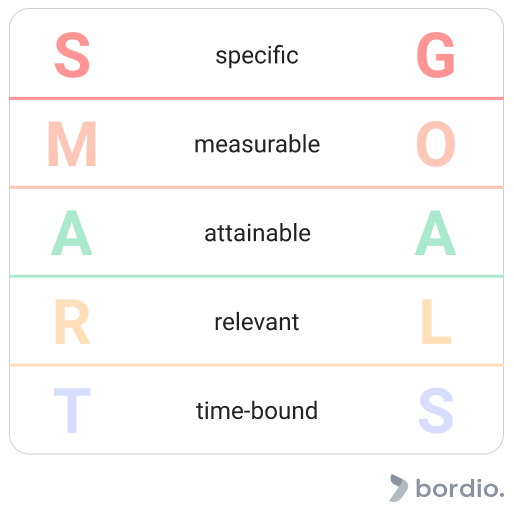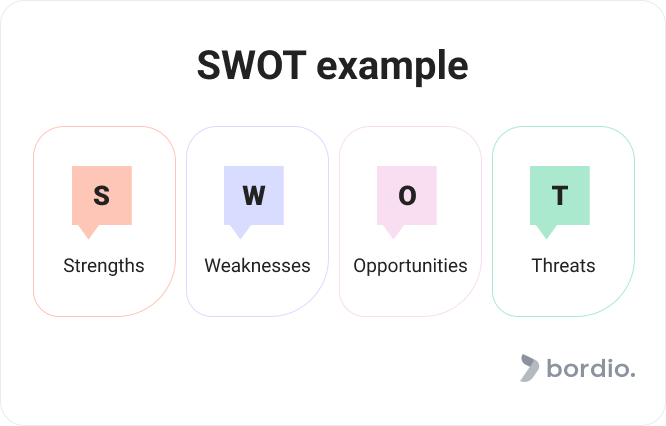Project management is filled with terminology and lingo that you wouldn’t be familiar with unless you work in the field.
But because there are so many methodologies, techniques, and tools, even experienced project managers can be startled by the phrases they’ve not heard before.
So, to help you avoid the situations where you don’t understand what your colleagues are talking about, we’ve compiled a list of the most common project management terms you should know.
Here it is.
Agile
Agile project management is a methodology that helps deliver software projects faster and with better results. Agile has become a hot topic in the project management world because it encourages a healthy and sustainable approach and a positive attitude towards work, respect for all team members and stakeholders, and a streamlined work process that doesn’t tolerate redundant busywork.
We’ve recently posted an article dedicated to Agile methodology, so check it out to learn more about its take on projects and key benefits for the teams who implement it. Teams that work from home can also use it with remote team collaboration tools.
Business case
A business case is usually a document that is designed to justify the projects’ existence. The main goal of a business case is to demonstrate the benefits and positive outcomes of a new initiative for the company. Additionally, it may include cost calculations and preliminary requirements.
Backlog
Backlog is one of the well-known project management terms that is widely used in project management frameworks like Scrum. Backlog refers to all project-related tasks that have to be completed before the final product or service can be signed off. Basically, the project cannot be complete unless all items on the backlog list are resolved.
In Scrum, the project team pays special attention to the backlog and makes sure it’s not ever-increasing or outdated. They even dedicate a meeting for this called Backlog Refinement.
Bottleneck
A bottleneck is a constraint that limits the systems’ capacity. It is a negative phenomenon that restricts the volume or the flow of processes in project management.
For example, if the development team produces more features than the testing team can verify and approve, then the developers are stuck waiting for the testers to finish their part before moving on to the next features. It means that the development rate slows down and the entire project becomes less efficient.
Critical path
According to Project Management Institute, the critical path is the longest sequence of scheduled tasks that determine the project’s timeframe.
In other words, it’s a list of activities that must be completed within a certain sequence for the project to be delivered on time. The project’s critical path does not include the tasks that are not a must but rather good-to-haves for the project.
For example, if we are building a house we must have the basement, walls, roof, door, and windows. All of these elements have to be put up in a sequence that would create a critical path. Having decorative columns and other external elements would not be considered essential, and, therefore, would not be included in the path.
For more details on the critical path method (CPM) and how to find your critical path, check out the separate blog post on CPM in project management.
Contingency plan
A contingency plan is a project management term for Plan B. It is implemented when things don’t work as planned initially due to all kinds of disruptions.
You would usually see contingency plans in complex projects with complicated structures and dependencies where the stakes are much higher. In smaller projects, it can, for example, be down to extra resource allocation for any risks that might be identified.
Deliverable
Deliverables are the expected end-products of the project. As PMBOK (Project Management Body of Knowledge) calls it, a deliverable is any unique and verifiable product or result that must be produced to complete a phase or the project.
You can have one or multiple deliverables, and they can range in their scope. A new feature and an entirely new solution can be equally called deliverables.
Fast-tracking
Fast-tracking is an SOS project management technique that helps the projects catch up and meet their deadlines without increasing the project budget.
The project management process is tricky and sometimes we end up in a situation where there’s still lots to do but very little time. If that happens, project managers can try fast-tracking where they would work on several tasks simultaneously, instead of waiting for task 1 to be complete before task 2 can be initiated.
This technique can help avert the crisis but it can also create an even bigger disaster than the team had before. All tasks that are fast-tracked have to be independent and there should be enough resources and knowledge for them to be completed without mistakes.
If one is not yet an experienced project manager, they should think twice or ask for advice before initiating fast-tracking. If you’d like to learn more, check our fast-tracking overview guide for more detail.
Tip: Thorough planning will usually help avoid having to use fast-tracking technique. Whenever the project is launched, everyone on the team should work closely with their online calendar planners to ensure they’re keeping up with the pace. Daily review of the to-dos along with weekly planning can do wonders even for the most complex and ambitious projects. Personally, we will recommend you some online planners from Bordio as well as handy daily task tracker.
Gantt chart
Gantt chart is a visual project management tool that helps view the entire project process in the form of a timeline.
It is a great tool because it’s easy to understand and it provides an instant overview of the current state. The project plan is shown in the form of horizontal bar tasks on a timeline.
Project managers and stakeholders can have a look and immediately see:
- The project progress.
- What still needs to be done.
- Who is in charge of the tasks.
- When will the tasks be completed.
- How long the task takes to complete.
Gantt charts are often compared with PERT charts (Program Evaluation Review Technique) which help plan and coordinate the projects’ activities by identifying the least, the most, and the comfortable time it takes to complete a task. In addition to Gantt, it is also recommended to try Bordio’s simple free daily schedule maker and simple virtual planner, which are aimed not only at project use but also at personal convenience.
Kanban
Kanban is widely referred to as the project management framework that originally started in production a long time ago but has since been adopted by many industries, including software development. Using the idea of Kanban as a technique you can implement it for convenience in your online schedule planner.
As a framework, Kanban focuses on providing early and consistent value. It encourages teams to be collaborative and self-sufficient. Kanban teams would often manage their workload individually with the help of day planners, coming to others for guidance only if an outsider’s input is required or an issue occurred.
Kanban board
Kanban board is arguably even more popular than the Kanban methodology itself. The board is a project management tool that visualizes the workflow and helps maximize efficiency.
The board can be physical or virtual. It consists of several columns that each include a list of tasks. The typical columns are ‘to-do’, ‘work-in-progress’, and ‘done’. Depending on the project or team’s preferences, more columns can be added (i.e., ‘testing’ or ‘needs approval’) and titles can be changed. In the beginning, all tasks are listed in the first column, gradually moving towards the last one.
Kanban also recommends limiting the number of unfinished tasks that can be processed at the same time. It is considered smarter to have fewer but completed tasks than a bunch of unfinished tasks hanging for long chunks of time.
The Kanban board has truly become iconic thanks to its visual aspect which makes the board extremely user-friendly and quick to use. Kanban boards are available in most project management software solutions.
KPI
KPI stands for Key Performance Indicator. It is a metric used to measure the progress in and success of a specific objective.
KPIs are widely used in project management because they allow for making data-driven estimations and drawing unbiased conclusions. An example of a project-related KPI can be a set number of tests that should be performed by the QA team per week.
KPIs are usually numeric and can have their own limitations, so they should be chosen carefully and used in combination with other tools for the most correct results.
Lean
In project management, Lean is a methodology and an approach to project management that emphasizes waste elimination. Waste comes in many forms: redundant tasks, inadequate resource allocation, or an unoptimized project plan. And it all should be spotted, analyzed, and removed for the best project results.
Lean was first pioneered by Toyota and used in production but has since then transformed and was adapted by many different industries. It has been adjusted by some to fit into the changing world. Eric Ries, for example, created his own version of the methodology and called it Lean Startup.
The key priorities of Lean include:
- Continuous improvement.
- Respect for people (within the team and beyond).
- Building healthy optimized workflows.
Milestone
A milestone is an important point in the project’s timeline that is used as a marker to track progress and analyze performance. Milestones are planned before the project is launched and they must be accomplished before a pre-defined deadline.
An example of a project milestone can be a critical feature’s release or the end of all testing.
Tip: Milestones are not goals, and they also should not be treated as an ordinary task in your to-do list.
MVP
MVP stands for a minimum viable product. The term was coined by Eric Ries in his ‘Lean Startup’ book that we covered in our Lean article in the blog.
An MVP is the most basic version of the product that the project team is working on. It should take minimum time and effort and be released to the end-users as soon as possible. MVP should help validate the team’s ideas and test them in real life.
MVPs allow avoiding extra waste (like time and resources) dedicated to building solutions that the end-users might not even want.
Project manager (PM)
A project manager is… You guessed it! Someone who manages a project.
What it means, in reality, is that the project manager is responsible for each step of the way: from ideation to final delivery and closing paperwork.
A project manager is in charge of planning the project’s life cycle, building the budget, communicating with all stakeholders, monitoring, and guiding the team’s work. On top of that, project managers also take care of risk and change management. Basically, they stay alert for the entire duration of the project, pick up where someone else is slacking, and keep a strategic mindset to prevent the project from derailing from the original plan.
If you’d like to learn more about PMs, read our guide on what PMs do and how to become a PM.
Project timeline
A project timeline is a way of visually representing all project stages against the timeline.
The project timeline is usually created during the project planning stage and can be used for general reference or to spot dependencies, potential issues, or ways to optimize the entire process.
Project baseline
A project baseline is a document that is used by the project management team to measure the progress and performance of the project against its timeline.
The project baseline consists of 3 key elements:
- Schedule
- Cost
- Scope
Effectively, the project baseline contains all project-related data, such as the full budget and spending plan, the detailed description of the goals and deliverables, and the project schedule with all activities planned.
How well the project baseline is designed can dictate the future of the project. If you’d like to learn more about ways to build a strong project baseline, read our ABCs of baselining a project guide.
Project owner
Depending on the circumstances, the project owner definition may vary.
In some cases, the project owner would mean the same as the project manager – someone who is in charge of the whole project operations and its success.
In larger organizations, or if a specific methodology is applied to project management, the project owner could be a separate figure from the PM. If that’s the case, then the project owner would be a primary stakeholder, someone who initiates and/or finances the project.
A project owner can be engaged in strategic project portfolio management where they overlook a group of projects, keeping their weekly planners busy with meetings and events.
Project scope
Project scope is a document that includes the total amount of work that has to be completed during the project to produce a meaningful outcome, be it a brand new product or service, or an enhancement to the existing solution.
Project scope is defined by the project management team together with the development team. The good project scope includes:
- Complete list of expected deliverables.
- Requirements for the end product.
- Work breakdown structure: what is done and when.
- Deadlines for project milestones.
- Resource allocation details (time, cost, and people).
Pivot
Pivoting means changing direction when the original plan doesn’t seem to work out.
Companies can pivot in many different directions, for example:
- Focus on specific functionality rather than the bigger solution that was created before (zoom-in pivot).
- Change the target audience that the company is relying upon (customer segment pivot).
- Switch to an alternative way of monetization, for example, move away from perpetual software licenses to monthly subscriptions (value capture pivot).
Pivoting is largely celebrated by the Lean Startup framework where its author, Eric Ries, outlines clear rules and guidelines for successful pivoting.
Project life cycle
A project lifecycle is a set of stages that the project goes through from start to finish until the final product is released and approved.
The project’s life cycle will look different based on the project management methodology that is being used. For example, in Scrum and Agile project management the stages are replaced by sprints. But really, each sprint includes most stages that the typical project would go through.
Prince2
Prince2 is a project management methodology that stands for PRojects IN Controlled Environments.
It is rather conservative thanks to its origin in the UK public sector where project managers had little freedom and many rules to follow.
Prince 2 is rather formal, follows a strict structure, and pays special attention to project justification. The peculiar part of the methodology is that it has a special relationship with the number seven. There are 7 fundamental principles, 7 processes, 7 roles, and 7 themes in Prince2.
Bordio’s team prepared a big article about PRINCE2 with more details and tips on mastering this project management framework.
Quality assurance (QA)
Quality assurance or QA is the ongoing process of ensuring and enabling the best project performance. The end goal of quality assurance activities is to guarantee the successful completion of the project that would result in maximum project stakeholders’ satisfaction.
Project managers usually design and submit a quality assurance plan before the project is kicked off. The plan would typically outline the project scope and detailed requirements, activities that would help the vision come to life, and guidelines with rules that would guarantee the best quality.
Scope creep
Scope creep is a negative event when the original project scope (i.e. total amount of work that must be completed within the project timeframe) gets expanded in an unsustainable fashion. For example, if the list of requirements has been updated with 10 more tasks but no changes in time and other resources were made. In that case, we risk failing the project because new requirements have not been considered during the planning stage.
But not every change or update of the scope is necessarily a bad thing. If the project needs changes, the project manager can go back to the scope and incorporate them into the work breakdown structure in a healthy way.
Stakeholders
Stakeholders are groups of individuals who are involved with the project directly or indirectly.
They either are actively working on the project (like a project team), or benefit from it (like business users). Sometimes there is also a group of stakeholders that fall into the third category – they are affected by the project.
The most common example of the third group of stakeholders would be the local community whose daily life would be disrupted by the massive construction of the new buildings in the area.
SMART goals
SMART goal setting is one of the mainstream management terms, so you’ve probably heard about it at some point in your studies or career.
SMART stands for specific, measurable, achievable, realistic, and time-bound. Whenever you are planning your goals and objectives, you can use this acronym as a point of reference to define goals that will really work.
SWOT
SWOT analysis is, perhaps, the most commonly used tool in project management and business in general. SWOT stands for strengths, weaknesses, opportunities, and threats.
The tool helps achieve 2 main goals:
- Do a comprehensive valuation of the situation.
- Make data-driven decisions based on the evaluation’s outcome.
In the context of project management, SWOT can be used across all stages, but also even before the project is launched. It acts as a risk management instrument and helps test the idea to see whether it makes sense to go ahead with it or not. Also talking about business it is also important to advise you the help of digital marketing agencies for startups that will take care of marketing in your business.
Scrum
Scrum is a project management framework used most in the IT field. The framework celebrates self-sufficiency and horizontal hierarchy within the teams.
Distinct features of this framework are:
- The flexibility of processes.
- The attitude that welcomes change.
- Focus on collaboration and delegation.
- Shorter project life cycle.
- Faster value delivery to the end-user.
Scrum divides the project into stages called sprints. Each sprint represents a mini-project on its own and it finishes with project deliverables that potentially can be used by businesses immediately.
Waterfall
The last word in today’s project management glossary is Waterfall.
The Waterfall is a traditional project management methodology that relies heavily on the linear approach. It works great for projects with a clear structure where there are many repetitive project activities and a low chance of changes. Projects in the Waterfall model are divided into stages and each stage must be 100% complete before we can move on to the next one.
As you may guess, it is not the hottest project management model among software development teams. However, it is widely used in fields like construction and marketing. This method would also be suitable to implement in your planning in schedule builder online.

